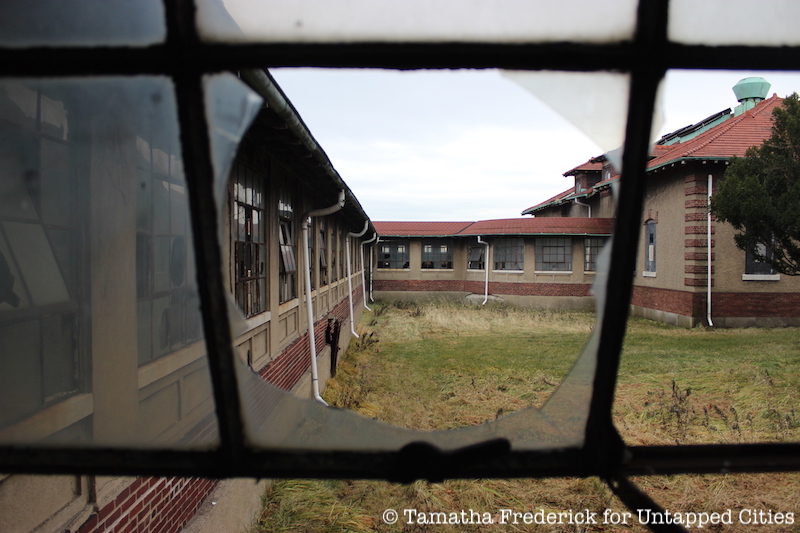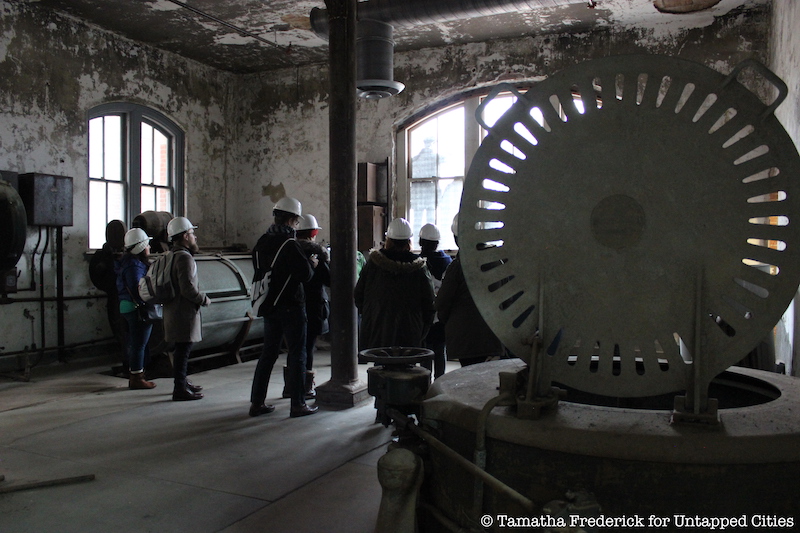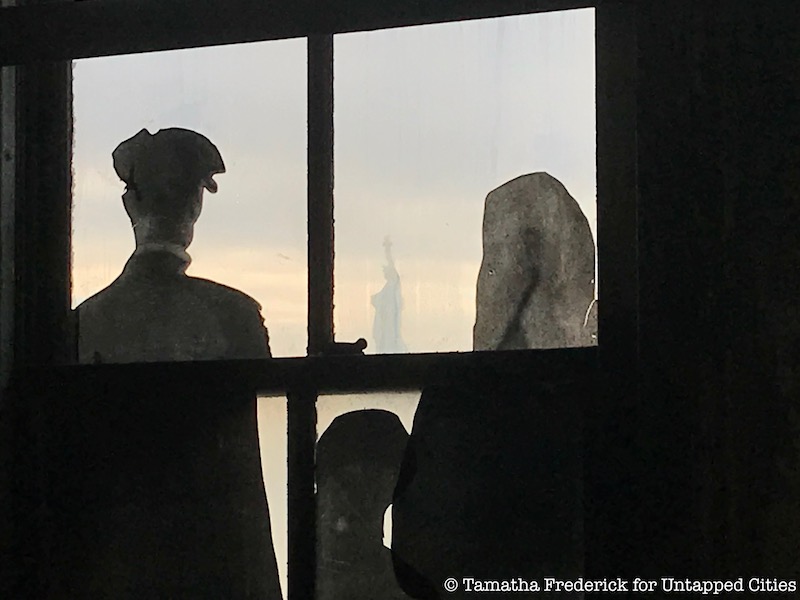
Ellis Island is one of New York City’s biggest tourist attractions and is well known as being one of America’s first immigration stations, but as you step off the ferry and head towards the National Museum of Immigration, the building where upwards of 12 million immigrants were processed, you may notice another sprawling complex of brick buildings just across the waterway. These buildings are the abandoned remains of the once thriving Ellis Island Hospital which has been closed to the public for over sixty years. You can gain access to explore inside this abandoned complex with Untapped Cities!
 The laundry room at the Ellis Island Hospital
The laundry room at the Ellis Island Hospital
Untapped Cities’ behind-the-scenes hard hat tour of the 29-building compound includes off-limits access to rooms you normally cannot enter, including the kitchen and autopsy room (with stadium seating!), as well as the guidance of a highly trained Save Ellis Island educator. Proceeds from the tours benefit Save Ellis Island, a non-profit working to restore the hospital.
Behind-the-Scenes Hard Hat Tour of the Abandoned Ellis Island Hospital
The Ellis Island Hospital was in use from 1901-1951 and in that time, it saw a lot of business. During the tour, you’ll learn not only about the hospital and its functions but also about Ellis Island in general, a place that 40% of Americans can trace their roots to today. Here is a preview of some of the most surprising facts you will learn on the tour:
8. The First Immigration Station Was Actually on the Mainland

From 1855 to 1892, immigrants arrived in New York City via Castle Clinton’s immigration station, also known as Castle Garden. It is believed that about 8 million immigrants were welcomed during this period including people like Andrew Carnegie and Nikola Telsa. However, unlike the well-oiled system that Ellis Island would eventually become, Castle Garden’s station was a bit unscrupulous. There was little screening for immigrants coming into the United States in terms of diseases. Some would bribe guards in order to pass inspection. In addition, new arrivals were met with scam artists trying to take advantage of their naivety. Many immigrants bought fraudulent train tickets or ended up working as cheap labor.
In 1890, the federal government took control of immigration processing and the station was moved to Ellis Island in 1892. The island location helped avoid the negative activity rampant on the mainland. It also allowed for regulated health inspections.





